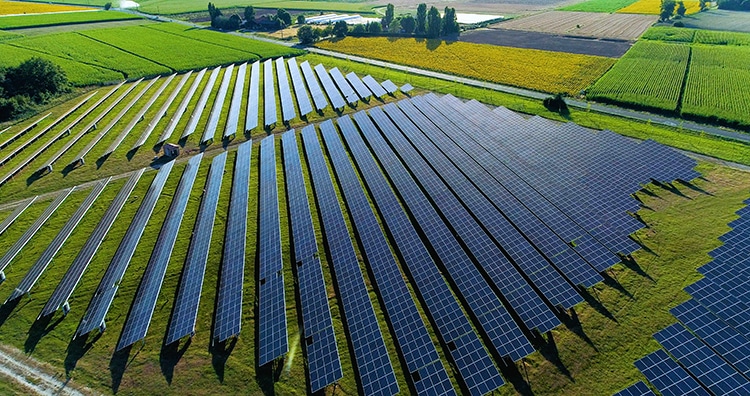
Photo: Stock Photos from FLY_AND_DIVE/Shutterstock
Public school districts across the nation are facing massive budget deficits. As districts tighten their fiscal belts, art classes are cut, teacher salaries stagnate, and it grows harder to attract (and keep) talented staff. The way out of large deficits may seem daunting, but the economic success of one Arkansas school district offers a guiding example for many others. The Batesville School District switched to solar power in 2017; and, as a result, it has since climbed out of its $250,000 budget deficit. Beyond recouping losses, the district has accumulated $1.8 million in budget surplus from energy savings—a surplus which goes towards raising underpaid teachers’ salaries.
In 2017, the company Entegrity conducted an audit of the district’s energy efficiency. The grim results found that the small consortium of six schools was spending a whopping $600,000 per year on energy. Batesville superintendent Michael Hester could think of better ways to use that much-needed cash. Faced with staff turnover and deficit, Hester knew that by raising teachers’ salaries, the district could attract and retain quality faculty. Quality faculty would help boost the student’s performance and allow the district to rise in state achievement rankings.
Assured by the promise of millions saved on energy over the years, the district took out a bond to finance the switch to clean energy. Batesville High School installed 1,400 solar panels. In only three years, the district has seen massive savings which have allowed for boosting teacher’s pay. The district has risen in state rankings as a result. The cherry on top is that the district’s energy consumption has also become significantly more environmentally friendly. Other nearby districts saw these encouraging results and have since followed suit, installing solar programs of their own.
The Batesville School District joins a growing number of schools turning to solar energy to reduce costs, lower global emissions, and make up budget shortages. As of 2019, 5.3 million students attend schools powered, at least in part, by solar energy. This number has grown as state and local governments get on board with the switch to renewable energy. Twenty-eight states and the District of Columbia have taken actions to encourage the shift. These policies encourage companies to shoulder the start-up costs of installing solar panels and infrastructure on school grounds. The districts pay for the energy they use, without having to manage the energy production themselves.
With the many logistical red-tape hurdles that still exist, administrators might also worry that public opinion could be skeptical of the switch to solar. However, administrators in Batesville found the exact opposite. Living near a coal-fired energy plant due to close over the next decade, residents did not recoil from solar but actually recognized renewable energy as the industry (and jobs) of the future. Hopefully, other school districts across the country will make the switch to solar—for their budgets, their teachers and students, and the wider health of our planet.
The Batesville School District in Arkansas switched to solar power as a way to save money on energy consumption. In three years, the district recovered from budget deficit and now has a $1.8 million surplus.

Photo: Stock Photos from AIR IMAGES/Shutterstock
The Batesville schools used the money saved to raise teacher salaries, knowing this would help them attract and retain quality staff. As a result, their students benefited and the school’s state rankings rose.

Photo: Stock Photos from RAWPIXEL.COM/Shutterstock
h/t: [Energy News]
Related Articles:
The IEA Announces Solar Power Is Now the Cheapest Form of Energy
These Solar-Powered Lily Flowers Can Illuminate Your Garden With Pretty Changing Colors
Kenya Develops Solar-Powered Plant That Turns Ocean Saltwater Into Clean Drinking Water
Former U.S. President Jimmy Carter Built a Solar Farm in His Hometown That Powers Half the City
